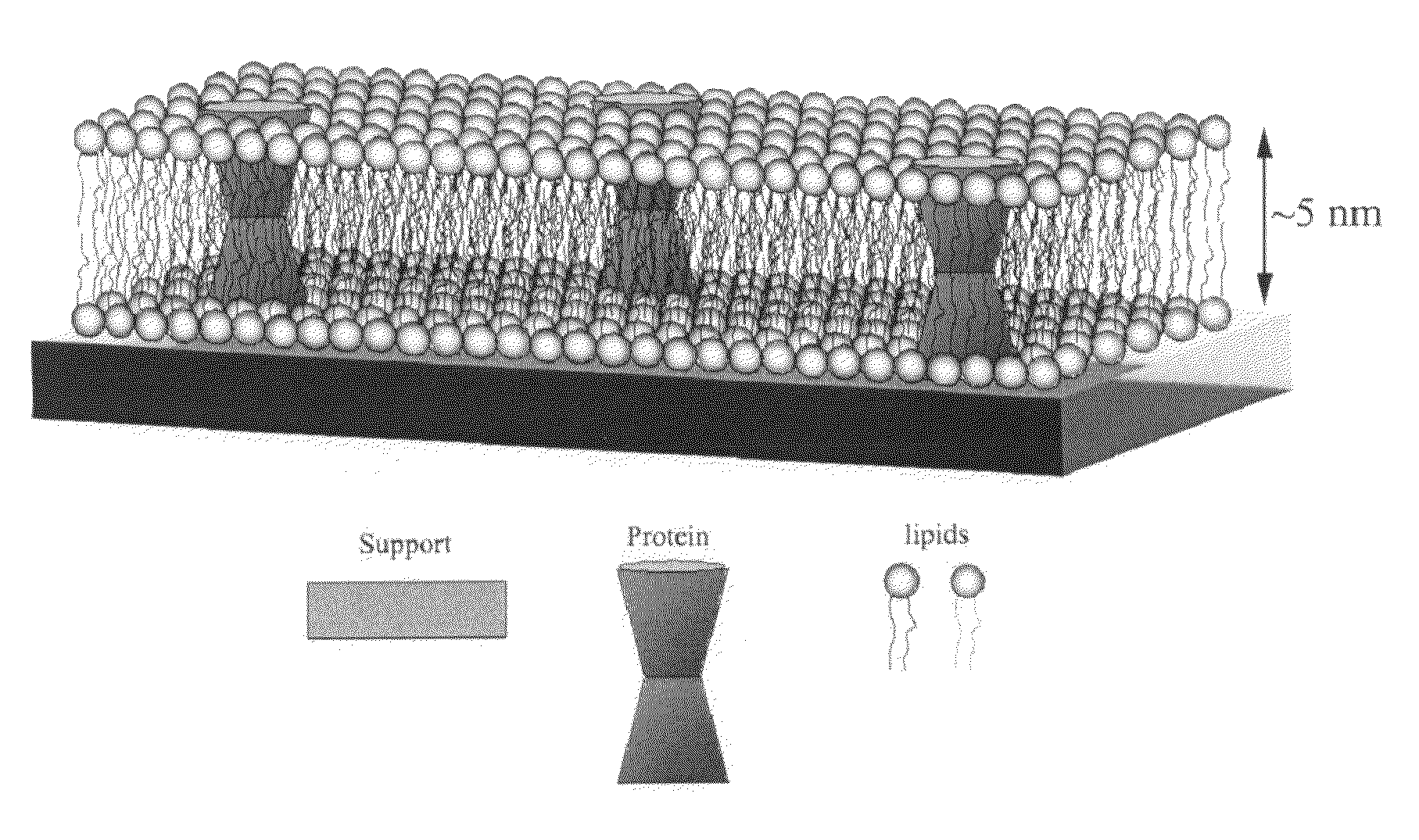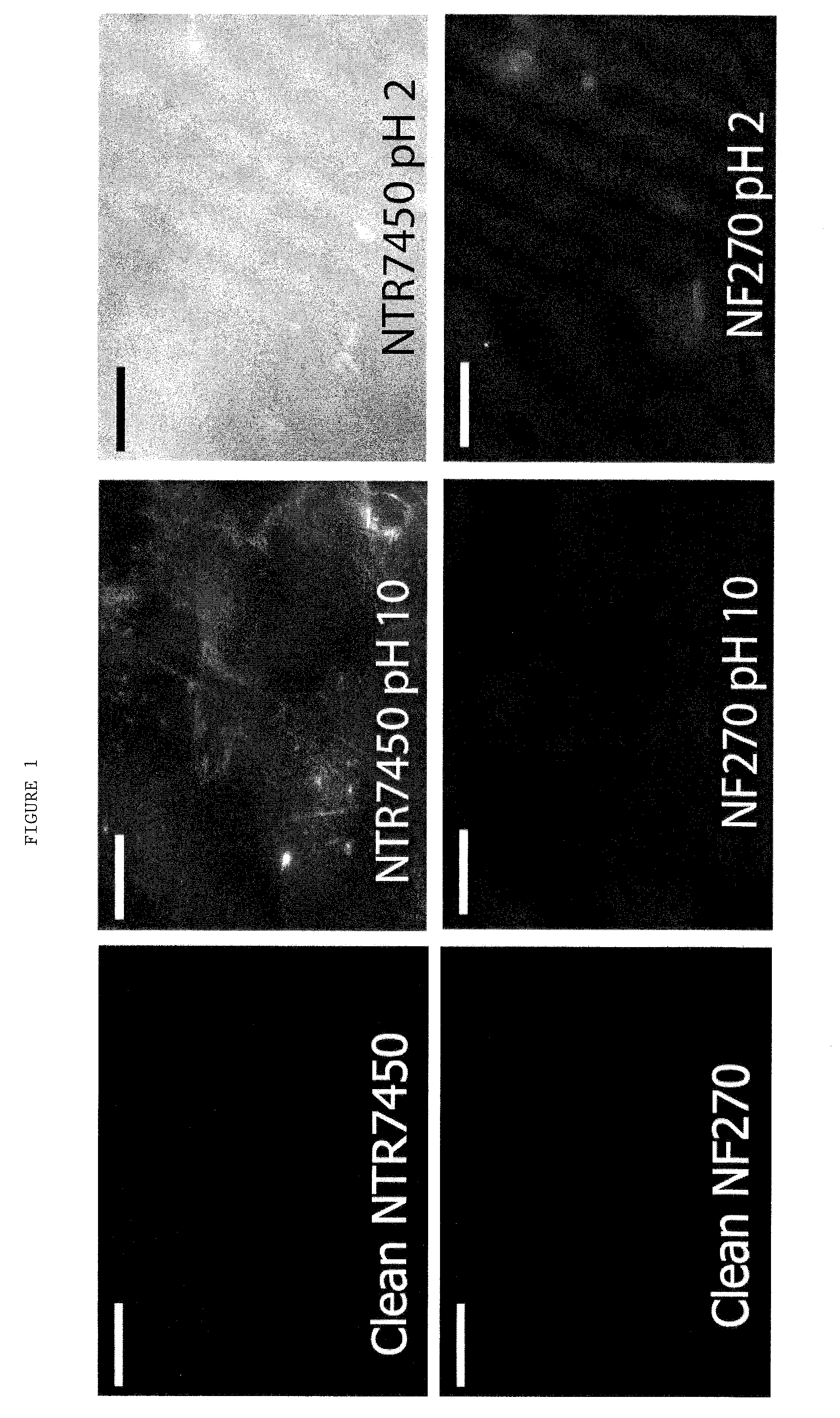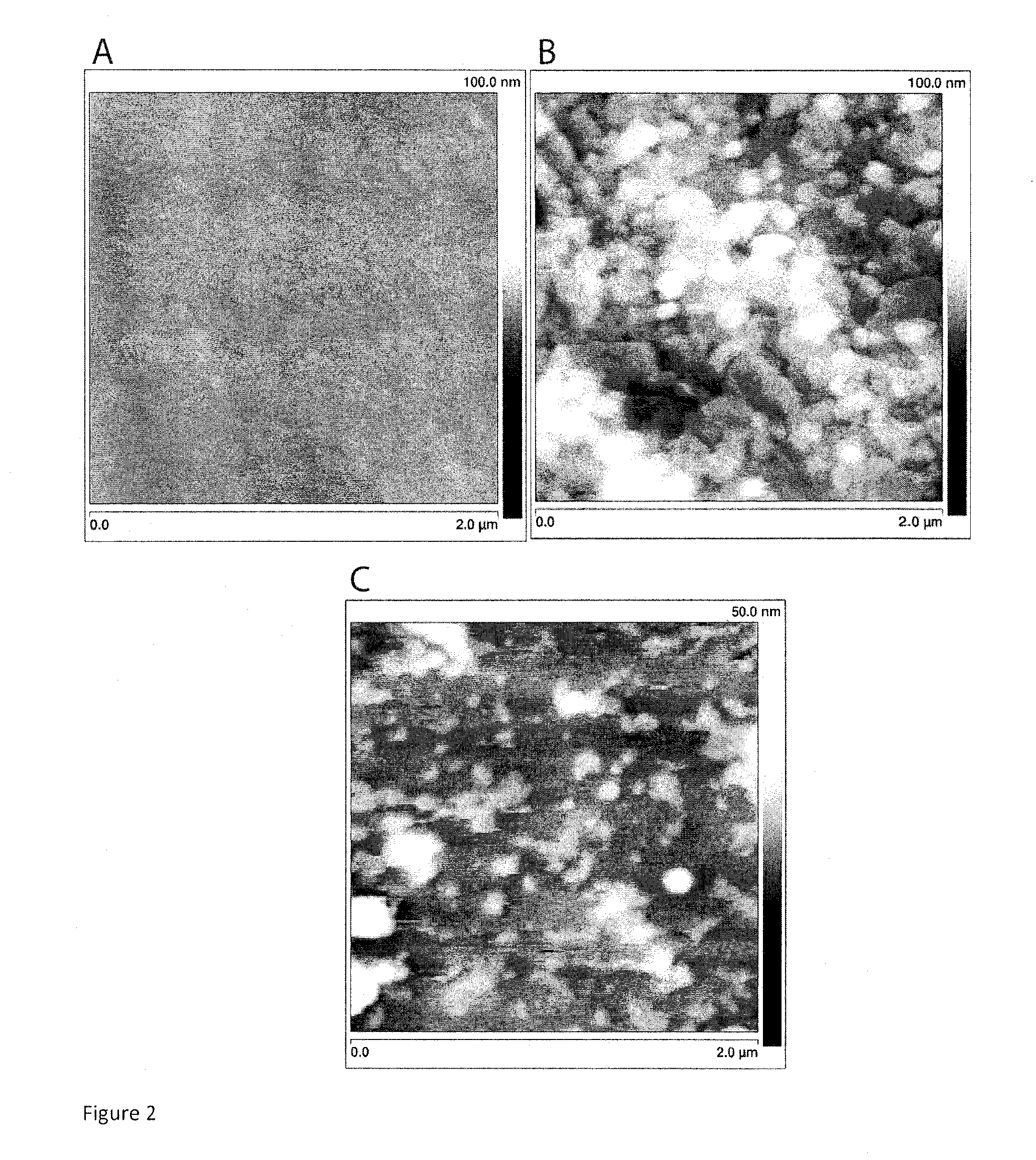Biomimetic membranes, their production and uses thereof in water purification
a technology of biomimetic membranes and membranes, applied in the field of biomimetic membranes, can solve the problems of unsupported, free-standing, unsuitable water filtration, and weak support of porous membranes, and achieve the effects of reducing the risk of material collapse and loss, and reducing the efficiency of biological membranes and their equivalents
- Summary
- Abstract
- Description
- Claims
- Application Information
AI Technical Summary
Benefits of technology
Problems solved by technology
Method used
Image
Examples
example 1
Phospholipids Bilayer Formation on NTR7450 Membrane (Solution A)
[0114]Solution A was prepared as follows: mixture of 1,2-dimyristoyl-sn-glycero-3-phosphocholine (DMPC, 0.015 grams), 1,2-dimyrystoyl-3-trimethylammonium-propane (DMTAP 0.003 grams) and 1,2-dimyristoyl-sn-glycero-phosphoethanolamine-N-(Lissamine-Rhodamine B Sulfonyl 3×10−4 grams) which will be referred as Rh-PE were dissolved in chloroform (1 ml) and shaken for 1 minute. The last lipid (i.e. Rh-PE) was added when fluorescence probe is required. The chloroform was evaporated at 40° C. under vacuum for 2 hours. The mixed lipids were introduced into aqueous solution (pH 2-8 with as low as possible ionic strength) to give final concentration of 1.5 mM DMPC+20% mol DMTAP+0.5% mol Rh-PE (solution A).
[0115]Solution A was shaken for 1 hour at 40° C. and was extruded through a polycarbonate membrane having 100 nm pores 10 times at 30° C. A piece of the NTR7450 membrane was covered by solution A for 3 hours (for pH 2) and washed ...
example 2
Phospholipids Bilayer Formation on NTR7450 / NF 270 Membranes
[0117]The procedure described in example 1 was repeated except that solution A was left over the NTR7450 membrane for 30 minutes and then the sample was washed by DDW. The sample was scanned using AFM at different times. The topography images can be seen in FIG. 2.
[0118]The same procedure was carried out on the NF270 membrane; no topography changes were recognized.
example 3
Characterization of the Phospholipids Bilayers Formed on NTR7450 / NF720 Membranes
[0119]The procedure described in example 1 was repeated and then the sample was rinsed with DDW.
[0120]The formed bilayers were characterized by fluorescence microscopy, Fluorescence Recovery after Photobleaching (FRAP) using Confocal Laser Scanning Microscopy (CLSM), Atomic Force Microscopy (AFM), Attenuated Total Reflection Fourier Transform IR (ATR-FTIR) and water flux.
[0121]All measurements showed good coverage of the bilayer on the surface with regions of double bilayer formation.
[0122]Hydraulic Permeability Measurements of clean NTR7450 and NTR7450 after 3 hours of vesicle fusion are presented in FIG. 3 below (whereas symbols are experimental data, lines are linear fits), resulting in 10.3 L×m−2×hr−1×bar−1 for clean NTR7450 and 0.3 L×m−2×hr−1×bar−1 for NTR7450 after 3 hours of vesicle fusion. This means that, using resistances in series (1 / Lp) additively, the permeability of the lipid layer is (1 / 0....
PUM
 Login to View More
Login to View More Abstract
Description
Claims
Application Information
 Login to View More
Login to View More - R&D
- Intellectual Property
- Life Sciences
- Materials
- Tech Scout
- Unparalleled Data Quality
- Higher Quality Content
- 60% Fewer Hallucinations
Browse by: Latest US Patents, China's latest patents, Technical Efficacy Thesaurus, Application Domain, Technology Topic, Popular Technical Reports.
© 2025 PatSnap. All rights reserved.Legal|Privacy policy|Modern Slavery Act Transparency Statement|Sitemap|About US| Contact US: help@patsnap.com



